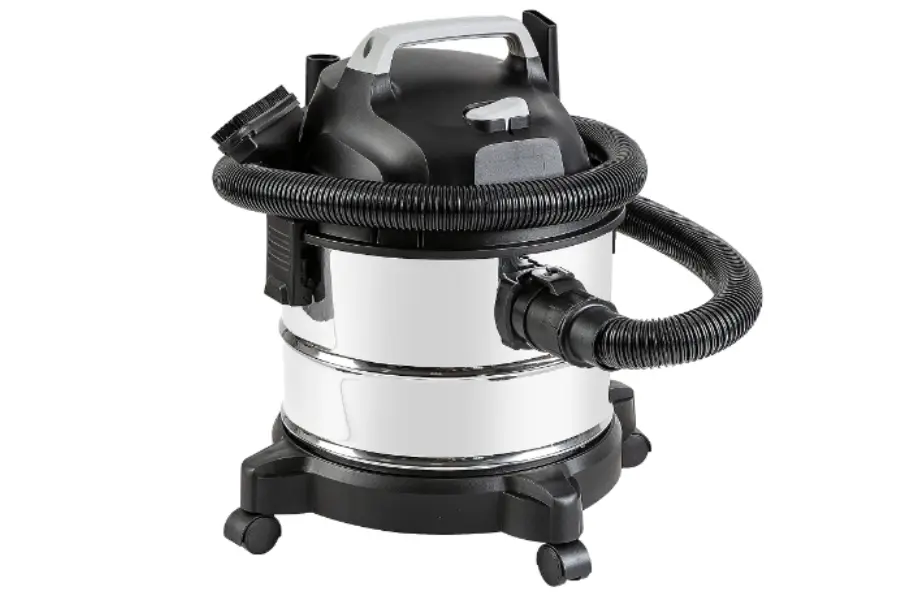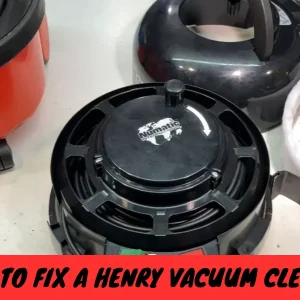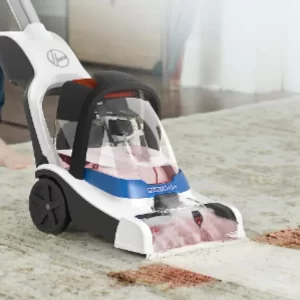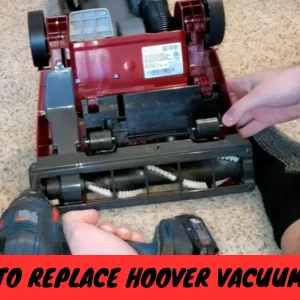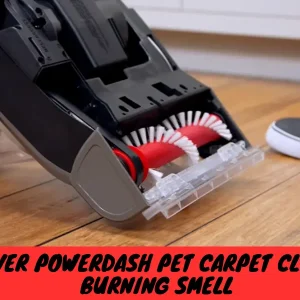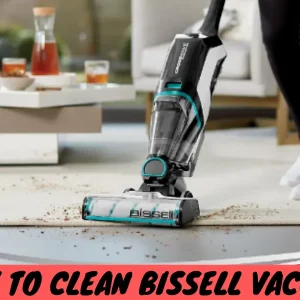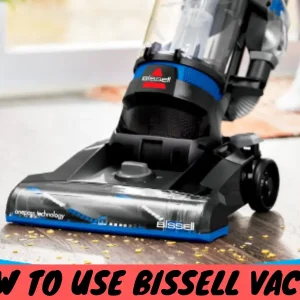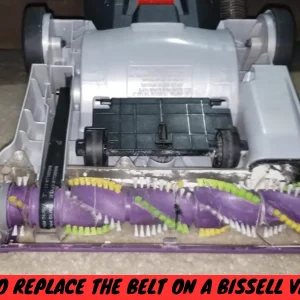“How to Clean Wet and Dry Vacuum Cleaner Like a Pro with the Ultimate Guide! Discover the keys to flawless cleaning performance right now.“
“How to Clean Wet and Dry Vacuum Cleaner”
1/ Unplug the wet and dry vacuum cleaner before cleaning.
2/ Empty the Canister regularly, and after draining the liquid, rinse the Canister to remove any damp debris.
3/ Before reassembling, clean the filters with a mild solution and make sure they are scorched.
4/ Check hoses, attachments, and brushes for obstructions and clean them as needed.
5/ Keep the exterior of the vacuum clean and occasionally inspect the parts for signs of deterioration.
By taking these precautions and steps, you can maintain your vacuum cleaner in excellent condition and ensure that it continues to operate at its peak performance.
How to Clean Wet and Dry Vacuum Cleaner step by step guide
Several developments on the market are mainly designed for different surface cleaning tasks. The story of wet and dry vacuum cleaners has revolutionized routine cleaning for several reasons. This is because a damp/dry cleaner is an exceptional tool for quickly and effortlessly vacuuming and drying dust, liquids, small debris, and numerous other substances. Unlike robots or other standard vacuums, limited to handling only dehydrated lots, a wet and dry vacuum cleaner is an all-in-one answer for thoroughly cleaning all messes on various surfaces, including hardwood floors. , carpet, tiles, and laminate flooring. This facility is precious for families with children or pets, as it dramatically simplifies household tasks.
So let’s start, in this article I will show you How to Clean Wet and Dry Vacuum Cleaner. This blog post will have a detailed discussion about wet and dry.
Gather Cleaning Supplies
How to Clean Wet and Dry Vacuum Cleaner Before start, gathering all the necessary cleaning products and tools is essential. Having all supplies readily available will ensure a smooth cleaning process. Here is a list of items you will need:
- Screwdriver:
- Cleaning Solution:
- Cloth or Towel:
- Bucket or Basin:
- Soft Bristle Brush:
- Gloves (optional):
- Compressed Air (optional):
By ensuring you have these cleaning products and tools on hand before you begin, you’ll be well prepared to clean your wet and dry vacuum cleaner thoroughly and effectively. This will help maintain the active system’s performance and prolong its life.
Safety Precautions
How to Clean Wet and Dry Vacuum Cleaner Before you start, it’s essential to prioritize safety. Here are some basic safety precautions to follow.
- Unplug the Vacuum Cleaner: Always start by disconnecting the vacuum cleaner’s power supply. Unplugging it ensures no chance of activation while you are engaged in cleaning or maintenance.
- Allow Cooling Time: Consider that the vacuum cleaner may still be hot if you’ve recently used it. Allow it to cool before cleaning to prevent burns or overheating of the material.
- Wear Protective Gear: Believe in wearing protection gear, such as gloves and safety glasses, during cleaning. These items can protect you from exposure to dust, dirt, or cleaning agents.
- Work in a Well-Ventilated Area: When cleaning the filter or handling potentially dusty or dirty materials, working in a well-ventilated area is recommended. This practice reduces the risk of dust inhalation and ensures fresh air circulation.
- Inspect the Power Cord: Before cleaning, check the power cord for any visible damage or damage. If you notice any problems, replace or repair the line as needed before using the vacuum cleaner again.
- Use the Right Cleaning Products: When cleaning vacuum cleaner parts such as filters or hoses, follow the recommended cleaning agents and techniques described in the user manual. Be careful not to use strong chemicals that could damage the equipment.
- Store Cleaning Supplies Safely: If you use cleaning products, store them in a safe, secure place out of the reach of children and pets. Additionally, follow any safety instructions provided on the product label.
To minimize the risks associated with cleaning your wet and dry vacuum cleaner and to ensure a safe maintenance experience, it is critical to follow these safety guidelines. Prioritizing safety not only keeps you safe but also extends the life of your vacuum cleaner.
Emptying the Vacuum Canister
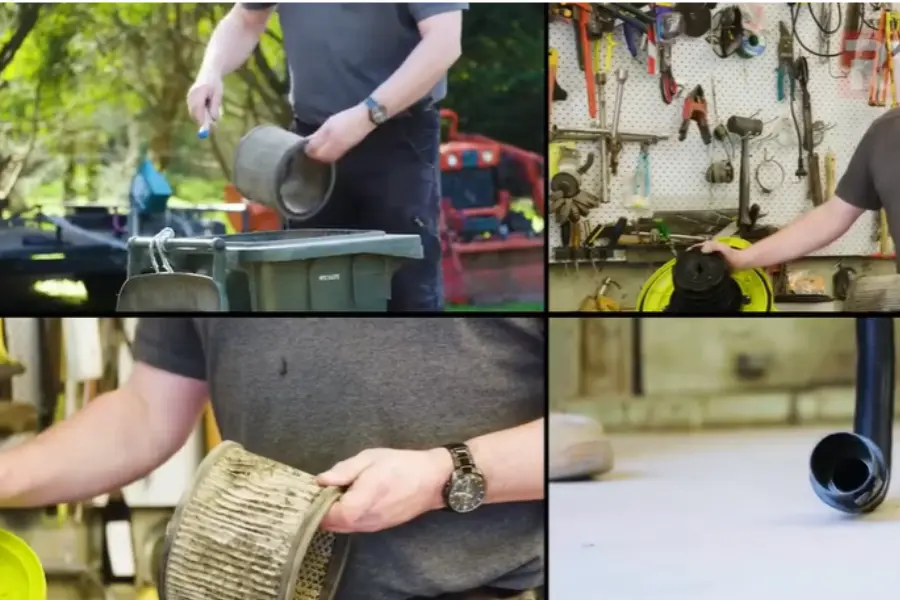
Careful attention is required when emptying the vacuum canister when keeping your wet and dry vacuum cleaner. Follow these instructions for both damp and dry debris and you know how to clean wet and dry vacuum cleaner.
For Dry Debris:
- Unplug the Vacuum:
- Locate the Canister Release:
- Position Over a Trash Bin:
- Open the Canister:
- Empty the Debris:
- Clean the Canister:
- Reassemble:
For Wet Debris:
- Unplug and Ensure Safety:
- Position Over a Drain or Sink:
- Open the Canister:
- Pour Out the Liquids:
- Rinse the Canister:
- Dispose of Dry Debris:
Cleaning the Vacuum Housing
It would help if you cleaned the vacuum housing to maintain the overall cleanliness and performance of your wet and dry vacuum cleaner. Here are some cleaning instructions for both the inside and outside:
Exterior Cleaning:
- Unplug the Vacuum:
- Dust and Debris Removal:
- Cleaning Solution:
- Dry Thoroughly:
Interior Cleaning:
Depending on the model and build of your vacuum, you may need to clean different parts inside the housing. Here are some standard actions:
- Access the Interior:
- Remove Debris: ‘
- Clean Filters and Canisters:
- Inspect for Clogs:
- Replace Parts as Needed:
Consult the user manual for detailed instructions and maintenance tips for your vacuum cleaner model, as cleaning procedures vary significantly between vacuum brands and types. You can extend the life and running performance of your vacuum housing by maintaining both its interior and exterior in good condition.
Clean tanks after use
The tank collects contaminated water using a wet/dry vacuum to handle wet messes. If tanks are not cleaned regularly, they can become filled with dirt, dust, debris, mold, and harmful bacteria over time. These pollutants float on water and can block air ducts. Furthermore, substances such as pet waste, milk spills, and food remains can be difficult to remove from water tanks and can leave permanent stains. Therefore, emptying the water tank and washing it with detergent after each use is recommended.
If you’re interested in knowing about more such informational blogs, then read our blog post on how to clean wet and dry vacuum cleaner.
Clean brush rolls when it is needed
Dirty brush rolls can quickly transfer bacteria and debris to every surface they encounter. If your wet and dry vacuum cleaner has dirty or worn brush rolls, it can leave water spots and marks on the surface. To clean your brush roll, follow these instructions. After separating your brush rolls, use a mild detergent to rinse the bristles to help remove debris gently. You can use diluted vinegar to clean brush bristles and kill germs.
The frequency of cleaning depends on the type of dirt the vacuum cleaner handles and how often you use it. After vacuuming and removing food particles, the brush rollers may not be completely clean and dry, leaving a moldy odor. Therefore, you should clean and replace the brush rolls as needed.
Clean Filters

Over time, dust, pollen, smoke, and filters that trap bacteria will build up and clog, reducing suction power and potentially damaging the vacuum cleaner. Most wet/dry vacuums in the market come with washable filters, so regular washing and replacing the filter can save you money. After you read the user manual, please remove the filter and wait for it to dry completely before returning it. Depending on how often you clean, consider replacing the filters every six to nine months to ensure the vacuum cleaning system works at its best.
Cleaning Attachments and Accessories
To support the implementation of your wet and dry vacuum cleaner attachments and accessories and prevent the spread of dirt and debris when they are not in use, follow these steps to clean a variety of attachments:
Hoses:
- Unplug the Vacuum: Ensure the vacuum cleaner is unplugged from the power source before cleaning any attachments.
- Detach the Hose: Part the vacuum cleaner stocking. Guide to your user manual for detailed education on how to do this, as the attachment process may vary.
- Shake Out Debris: Hold one end of the hose and gently shake it to remove debris or loose dirt.
- Brush the Interior: To clean the inside of the hose, use a long, flexible brush or a pipe cleaner. To remove stubborn dirt or dust, insert the brush or pipe cleaner at one end and move it back and forth.
- Rinse (if necessary): If the hose is washable, rinse thoroughly in hot water. Make sure it is scorched before reattaching the vacuum.
Brushes and Nozzles:
- Remove from Vacuum: Depending on the type, separate the brush or nozzle from the wand or hose of the vacuum cleaner.
- Shake Off Loose Debris: Removing loose dirt or debris, gently shake the brush or nozzle.
- Use a Brush: Use a soft-bristled brush or an old toothbrush to clean dirt and dust from the bristles or surface of the attachment.
- Rinse (if necessary): If the attachment is washable, rinse it with warm water. Ensure it’s scorched before reattaching it to the vacuum cleaner.
Crevice Tools:
- Remove from Vacuum: Separate the crevice tool from the vacuum cleaner.
- Shake Out Debris: Hold the crevice tool vertically and tap it against a hard shell to dislodge any trapped dirt or debris.
- Use a Brush: Use a small brush or a pipe cleaner to clean the narrow cracks and grooves of the tool.
- Rinse (if necessary): If the crack tool is washable, rinse it with warm water and let it dry before reattaching it to the void cleaner.
Upholstery Brushes:
- Remove from Vacuum: Take the upholstery brush off the vacuum cleaner.
- Shake Off Loose Debris: Shake the meeting gently to release any loose dirt or debris.
- Brush the Bristles: Use a soft brush or an old toothbrush to clean the bristles of the upholstery brush.
- Rinse (if necessary): If the upholstery brush is washable, rinse it with warm water and allow it to dry thoroughly before reattaching it to the vacuum cleaner.
Regularly cleaning your vacuum attachments and accessories ensures they collect dirt and debris effectively while vacuuming. This practice also contributes to maintaining your home’s overall cleanliness and hygiene. Refer to your vacuum’s user manual for specific cleaning and maintenance instructions, as attachment care may vary depending on the model.
Maintenance Tips
After familiarizing yourself with these How to Clean Wet and Dry Vacuum Cleaner tips, you should have a good idea of maintaining your wet and dry vacuum cleaner. While this may seem daunting, don’t worry. With robust damp/dry vacuum cleaners and mops from Aspiron, cleaning and maintaining your home becomes hassle-free. Allow me to introduce you to its innovative design and exceptional features.
Between Cleanings:
- Empty the Canister Regularly: Whether you’re vacuuming dry or wet debris, emptying the vacuum canister after each use is essential. This prevents overfilling, which can weaken suction.
- Inspect the Power Cord: After each use, check the power cord for wear, fraying, or damage if you find a problem, repair or replace the line to avoid an electrical hazard.
- Clean Filters: If your vacuum has washable or replaceable filters for optimal airflow and filtration, check them regularly (following the manufacturer’s recommendations) and clean or replace them as needed.
- Check for Blockages: Regularly inspect hoses and pipes for blockages or clogs. Removing any obstruction is crucial to ensure proper suction.
- Store Properly: When your vacuum is unused, store it in a dry, cool place and keep it upright to prevent damage to hoses or other components.
Regular Component Checks:
- Brush Roll or Beater Bar: Check your vacuum cleaner’s brush roll or beater bar for tangles, debris, or damage. To ensure effective carpet cleaning, sweep and remove any obstructions.
- Hose and Attachments: Check nozzles, hoses, and other accessories for tears, cracks, or loose connections. Maintaining a safe fit and efficient operation by repairing or replacing damaged parts.
- Seals and Gaskets: Check gaskets and seals for signs of damage or wear. Broken seals can damage suction. To ensure proper sealing between components, replace them if necessary.
- Wheels and Casters: Verify that the wheels and casters are securely attached, undamaged, and functioning correctly. If necessary, grease the wheel axles for smooth operation.
- Motor and Belts: When using the vacuum, notice unusual noises or smells. Any strange noises or smells may indicate a motor or belt problem. Handle these problems quickly to stop further damage.
- Handle and Controls: Check the vacuum control and handle for damage or loose components. Tighten bolts and screws as required.
- Inspect the Exterior: Inspect the surface of the vacuum cleaner regularly for physical damage or cracks. Fix any problems to prevent them from getting worse.
- Schedule Professional Maintenance: If you use your vacuum frequently, consider scheduling regular professional maintenance. Experts can inspect and maintain internal components that may be difficult to access.
Dual Tank Design
When cleaning surfaces, always use a fresh mixture of cleaning solution and water for dual tank systems, which separate clean and dirty water. Unlike a conventional mop, there is no need to carry a heavy water bucket. The 18.6 and 20.3oz dirty water tanks are adequately sized to minimize refilling and emptying frequency. Furthermore, dry and wet waste is separated to reduce the risk of pipe clogging when disposing of wet waste.
Extended Battery life
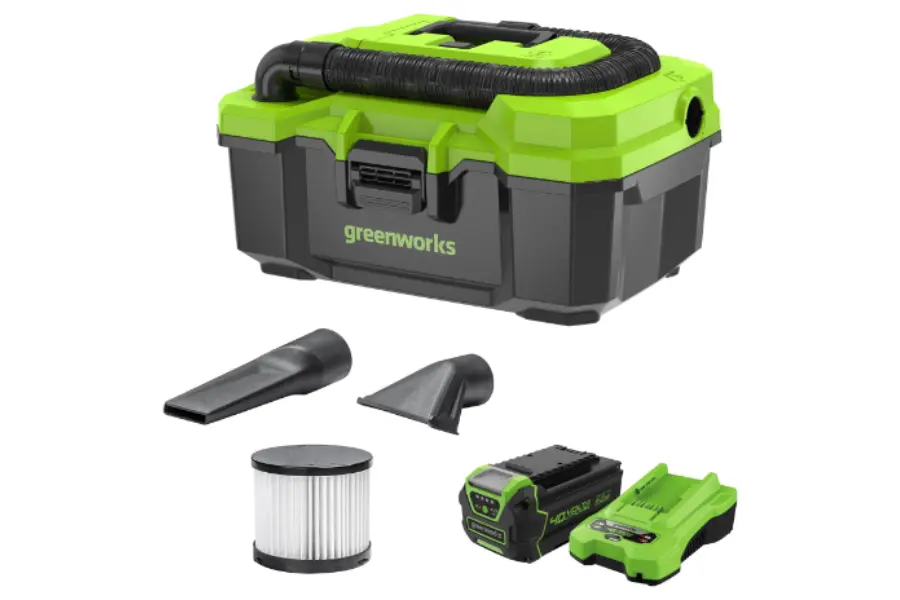
This cordless vacuum cleaner offers a maximum runtime of 35 minutes, ensuring you can get a thorough floor clean without worrying about battery issues. It fully charges in just 3.5 hours, and you can easily monitor the battery level using the convenient LED screen.
Voice Prompts
Need help to stay on top of vacuum cleaner maintenance? This vacuum has you covered with built-in features for maintenance reminders. Like an intelligent assistant, this vacuum will alert you to any unexpected problems with your device and notify you when it’s time to clean the rolls, filter, and tank. You can quickly address and maintain your vacuum cleaner following the audio instructions.
By following these maintenance guidelines and conducting regular checks for wear, Your wet and dry vacuum cleaner may be maintained to extend its life and keep it operating at its peak efficiency. Routine maintenance keeps your vacuum cleaner in good working order and contributes to a clean and healthy living space.
Troubleshooting
Even the most reliable vacuum cleaners experience problems from time to time. Here are some common issues that wet and dry vacuum cleaner users may encounter with the solution:
Loss of Suction Power:
If your vacuum cleaner has a weak suction force or doesn’t pick up debris well, it can bother you.
Solution:
- Check for clogs: Check hoses, nozzles, and attachments for blockages and remove any blockages.
- Empty the Canister to restore suction if it is full or the bag is jam-packed.
- Clean or replace filters if they are clogged or dirty, and replace disposable filters with washable ones.
- Check the brush roll: Ensure the brush roll or beater bar is clean and tang-free. If the bristles are frayed, replace them.
Vacuum Overheating:
Issue: It may overheat if the vacuum operates for an extended period, especially when picking up fine dust.
Solution:
- Allow the vacuum to cool by unplugging and turning it off. Before using it again, let it cool for at least 30 minutes.
- Check for clogs: Blocked airflow due to clogs can cause overheating. Remove any obstacles.
- Clean filter: A dirty or clogged filter can cause an overheated vacuum. Clean or replace them if necessary.
Unusual Noises:
Issue: If your vacuum makes unusual noises, it may mean a problem with internal parts.
Solution:
- Check for foreign objects: Turn off and unplug the vacuum. Inspect the brush roll, hoses, and attachments for foreign objects or debris generating the noise. Remove them.
- Inspect the brush roll: Worn or damaged ones can make strange noises. Replace if necessary.
- Motor issues: If the racket persists, the motor may be damaged or worn. Confer a professional mechanic for diagnosis and rehabilitation.
Vacuum Won’t Turn On:
Issue: If the vacuum doesn’t start when you push the power button, it can be due to various reasons.
Solution:
- Check the power source: Ensure the vacuum and outlet parts are correctly plugged in. Try a different outlet.
- Overheating safety feature: Some vacuums have a built-in security feature that closes off the engine when it overheats. Let it chill before attempting to restart.
- Check the power line: Inspect the power cord for damage. If it’s frayed or damaged, replace it.
- Reset the vacuum: Some vacuums have a reset button or thermal overload protector. Press the reset button if available.
Vacuum Smells Bad:
Issue: Unpleasant odors can originate from the vacuum, mainly if it has been used to clean wet debris or if filters are dirty.
Solution:
- Empty the Canister or replace the bag: Remove any debris or liquids from the Canister or replace the bag using a bagged vacuum.
- Clean filters: Dirty filters can emit odors. Clean washable filters or replace disposable ones.
- Deodorize: Consider using vacuum-specific deodorizing products or adding a few drops of essential oil to the filter to leave a pleasant scent.
If you encounter problems that these troubleshooting techniques cannot resolve, refer to the vacuum cleaner’s user manual for model-specific instructions or contact the manufacturer’s customer service for further assistance.
“Send us your cleaning advice”
Please feel free to comment below with any reader feedback as well as any advice you may have on vacuum cleaning. Your skills and experience could benefit the neighborhood by assisting others in keeping their homes clean and making the best use of their vacuums. Please feel free to contribute any useful cleaning advice or amusing stories about wet and dry vacuum vacuums.
How to clean wet and dry vacuum cleaner filter
It is easy to maintain the performance and durability of the equipment when you clean the filter with a wet and dry vacuum cleaner. Before you begin, unplug the vacuum and empty the container. To clean a damp filter, remove it from the void and rinse with water until it runs clear. Air dry thoroughly before returning to vacuum.
On the other hand, lightly brush or tap to remove excess dust and dirt for dry filters. If the filter is washable, follow the manufacturer’s cleaning instructions. If it can’t be washed, consider replacing it. You must perform regular filter maintenance to ensure that your vacuum cleaner works effectively for both dry and wet cleaning jobs. Always refer to your vacuum’s user manual for detailed instructions on cleaning and replacing filters.
Does a wet and dry vacuum cleaner wash carpets
A wet and dry vacuum cleaner, commonly known as a shop vacuum or multipurpose vacuum, primarily handles a range of cleaning tasks. It excels at vacuuming damp and dry materials, including dust, dirt, spills, and even small amounts of liquid. However, it is not designed for traditional carpet washing. Unlike dedicated carpet or steam cleaners, wet and dry vacuums lack essential tools like water tanks, heating elements, and brushes to deep clean and disinfect carpets.
Still, you can employ them to address liquid spills and surface-level debris on carpets. For a comprehensive and efficient carpet cleaning solution, it is recommended to use a professional carpet cleaner to shampoo, scrape, and remove dirt from the carpet fibers.
How to maintain a wet and dry vac
Conclusion: How to clean wet and dry vacuum cleaner
The performance and lifespan of your wet and dry vacuum cleaner depend on the quality of maintenance you provide. You can ensure that your vacuum cleaner continues to work effectively for many years by following these instructions and regular maintenance.
FAQs
It’s recommended to clean your vacuum cleaner after every use or at least once a month for optimal performance.
No, not all parts can be washed in water. Refer to your vacuum’s manual for specific cleaning instructions for each component.
Check for clogs in the hose, brush roll, and nozzle. Also, ensure that your filters are clean and in good condition.
Lubricating moving parts is essential to prevent wear and tear. Refer to your vacuum’s manual for guidance on which parts require lubrication.
Dispose of filters according to your local regulations. Some filters may be recyclable, so check with your local recycling center.
